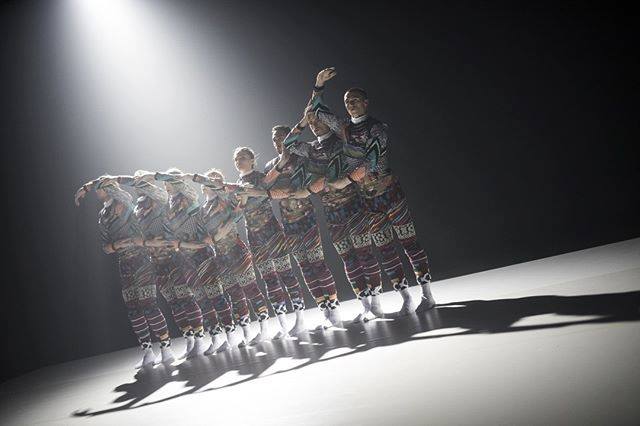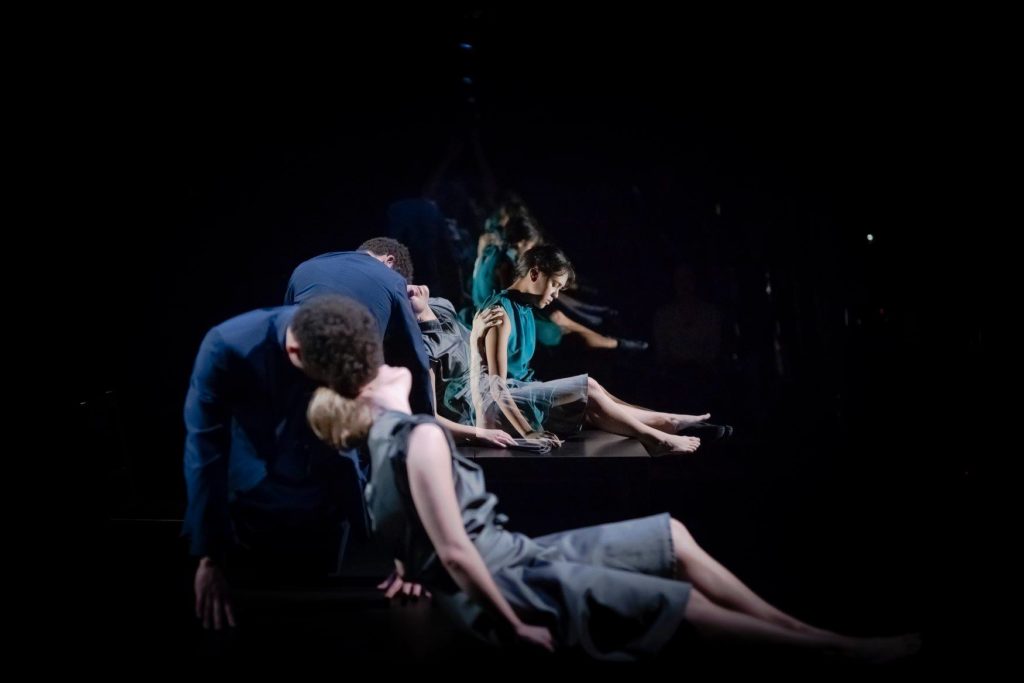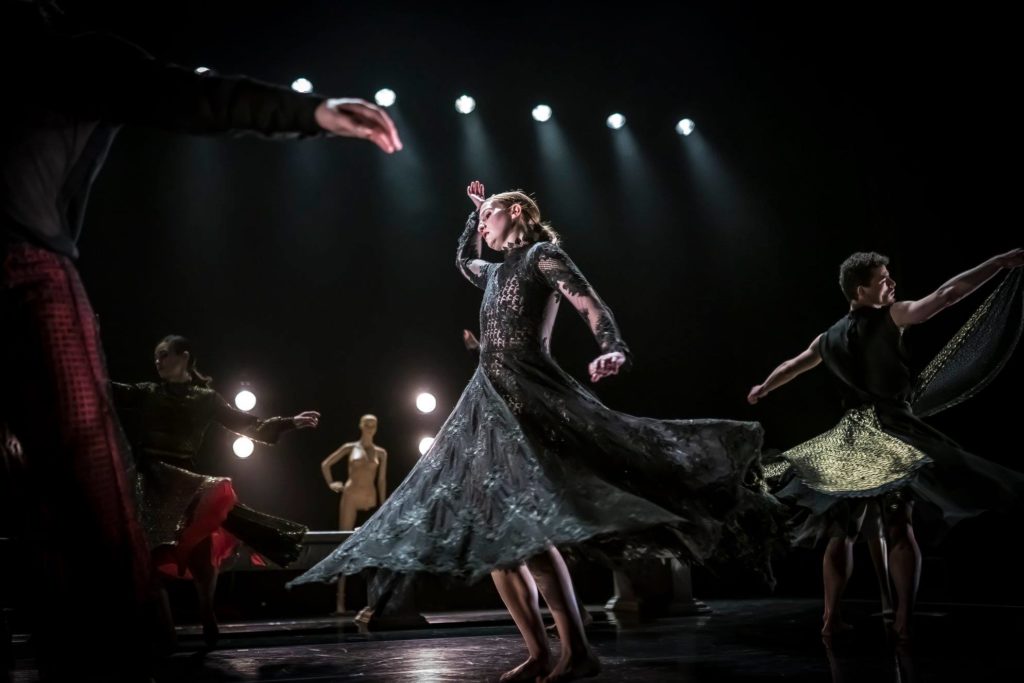
 (3.5 / 5)
(3.5 / 5)
It is with trepidation that I venture in writing a review of my first ever contemporary dance show, Awakening, a three-piece programme produced by National Dance Company Wales. All the three dance pieces have a distinctive style, show a desire to engage with ideas, and are executed skilfully. Watching the show was an interesting experience that left me intrigued, puzzled, and annoyed. I was intrigued by the attempt at using movement to convey visual effects, puzzled by the overall concern for concept, too often fuzzy, to the detriment of emotion, and annoyed at the diminished role of music, especially in the first two pieces, which but conveys a dystopian atmosphere, instead of being integral part of the performance.

The first piece, Tundra, begins with a captivating image of a dancer in a cone-shaped costume in a red light and an otherworldly voice. The stage is plunged into the dark and the figure disappears. As the stage is lit again by a white light, a group of dancers in white and blue cone-shaped costumes appear. They move together as a group and glide beautifully across the floor. This is perhaps the most striking part of Tundra, albeit relatively short by comparison with the main part of the piece, which consists of dancers in a colourful costume moving together as one. Their legs and arms touch to form one continuous shape and move on the stage like a snake. The choreographer, Marcos Morau, found inspiration in Russian folk music and dance, yet the cone-dress seemed much closer to the Korean traditional dress, while the main ‘snake-like’ performance reminded me of the Chinese dragon dance. The performance is smooth and elegant but the parts are disjointed and the music fails to convey any emotion.

Tundra is followed by Afterimage by choreographer Fernando Melo. The piece plays cleverly with mirrors and light to create the illusion of figures appearing and fading away like ghosts. The illusion effects are inspired by the technique of Henry Dircks and John Henry Pepper, which used light and glass to create ghostly appearances. In Afterimage, the dancers dissolve, often into one another, through multiple reflections. The piece is an exploration of different perspectives that never meet. It is well crafted, interesting, and performed gracefully; yet it feels too concerned with a visual effect conveyed through movement rather than dance. Like Tundra, it is too conceptual to convey emotion, and not aided by the dystopian music.

After the second interval, two women came and sat next to me. They could not make anything out of the first two pieces, ‘too symbolical,’ one said; yet they were enthusiastic about the third piece, the Revellers’ Mass. It is easy to see why. The Revellers’ Mass has a narrative, elaborate costumes, prominent music, and a tinge of humour. The piece begins with a male voice speaking Georgian and a priest lighting candles on a long flat surface. The sacred is alternated with the profane. The flat surface becomes a table and the sacred atmosphere turns into a wild party. At one point, the dancers at the table are reminiscent of the Last Supper, yet the reference serves little purpose and is a far cry from the biting irony of the Last Supper in Louis Bunuel’s Viridiana. Choreographer Caroline Finn is perhaps overambitious in seeking to capture ‘ritual and etiquette, and ceremony, as well as primal human behaviour.’ The conflation of ritual, etiquette, and ceremony is irksome and the contrast with partying as ‘primal human behaviour’ highly problematic. Revellers’ Mass is nevertheless entertaining and ends humorously with drunken revellers being dragged across the floor to the notes of Edith Piaf’s Je ne regrette rien.
As a novice, Awakening has been an interesting and thought-provoking experience. I acknowledge my preference for emotional engagement when it comes to all art forms; yet the three dance pieces have opened a door to a way of experiencing art that has left me curious notwithstanding the frustration. The show has perhaps succeeded in raising questions, the most important of which might be ‘does art need emotion to be art?’
